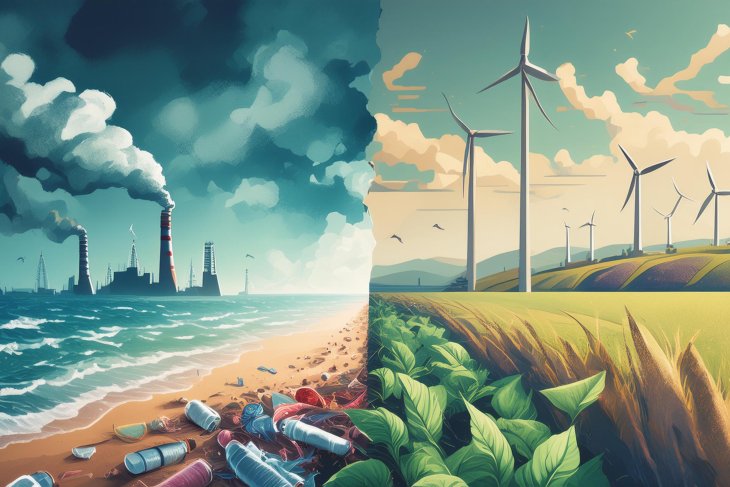You might have heard about NFTs, one-of-a-kind digital assets that authenticate digital content such as artwork or cryptocurrencies. Digital pictures are easy to copy and share, but an NFT is like a digital receipt that shows that your picture is the original. An NFT is impossible to copy but easy to transact.
How do NFTs work?
The ownership of an NFT is recorded on a blockchain. A blockchain is like a shared document of which many people own a copy. The blockchain records exactly who owns which NFT. Instead of trusting one person to keep the document accurate, everyone updates their copy at the same time. With so many copies, you might see what makes it hard to cheat the system.
To prevent cheating on the blockchain, most blockchains use a method known as proof-of-work. Imagine it like a digital puzzle-solving competition. Whenever someone wants to add something to the blockchain, computers compete to solve a complex mathematical puzzle. It looks like a race, with each computer striving to be the first to crack the code and validate the transaction. The first computer that successfully solves the mathematical puzzle earns the right to add the information to the blockchain and receives a reward for winning.
Proof-of-work is polluting
To solve the mathematical problems, the computers require a lot of energy. Every time someone buys or sells an NFT, this energy must be used for solving a complex mathematical problem. Since not all our energy comes from renewable energy sources, every transaction comes at an environmental cost. Scientists calculated that the emissions from many popular blockchains in 2021 alone have been linked to approximately 19,000 future deaths.
Reducing emissions
Many developers of blockchain technologies have been working on different methods to reduce the high emissions from blockchains. While some actions have been taken in some places, there is still a lack of global coordination. Some researchers work on policy interventions as a solution. One of them is Imad Ibrahim, an assistant professor in environmental law and governance, who works on global issues like these from a legal perspective.
According to Ibrahim's research, most platforms are hesitant to change. “They prefer proof-of-work because it is tried and tested, industry standard and has more proven security”, he writes together with colleagues in a publication. Together they suggest several ways to reduce the carbon emissions of blockchains.
Possible interventions
One way to make blockchain technologies more sustainable is through regulatory measures. Governments could implement laws and bills to suspend a particular blockchain technology that uses a proof-of-work method until it can show its impact on the environment is low enough. Additionally, policymakers could consider implementing transactional taxes that vary based on the method used for verification. Proof-of-work transactions would be taxed more compared to other methods. This encourages developers to move towards more efficient alternatives.
These policies would focus mostly on the technology itself. Instead, policymakers could also increase the costs of (high) energy usage. Implementing surcharges on high energy consumption encourages people to use more energy-efficient blockchain technologies. Alternatively, policymakers could also increase the share of renewable energy used for every transaction by requiring clean energy or mandating carbon offsets.
Towards a Responsible Digital Future
It’s important to recognise the environmental impact of these blockchain technologies. By taking action now, we can avoid having to completely ban the use of these technologies. In this way, we can shape a digital future that's both innovative and environmentally responsible!
Source: Blockchain, climate damage, and death: Policy interventions to reduce the carbon emissions, mortality, and net-zero implications of non-fungible tokens and Bitcoin
DOI: 10.1016/j.erss.2022.102499




